Gas War: Pro-EV California Declares State of Emergency, Ask Residents to Use Less Electricity

Just days after the California Air Resources Board (CARB) finalized its plan to ban internal combustion engines by 2035, Governor Gavin Newsom issued a state of emergency due to an overtaxed energy grid. Citizens are now being asked to ration their power usage while the government tries to figure out new protocols for dealing with the matter. This includes asking the owners of all-electric vehicles to hold off on charging them. However, people are starting to wonder what this ultimately means with respect to the proposed future where the state has effectively mandated all residents to drive EVs.
It’s definitely something we’ve brought up in the past, often referencing Germany as an example. After striving for years to become the poster child for renewable/clean energy and all-electric transportation, the European nation found itself coming up against energy shortages. Hoping to mitigate the issue, the country fell back on coal-fired power plants 15 years ago to make up the difference (similar to China) and ultimately worsened its own air pollution.
Though it’s easy to see why the country wanted to get away from oil in the first place. Germany has had a long and illustrious history of energy shortages that foreshadow periods of severe social upheaval. By moving to alternative sources (air, wind, solar, and synthetic gasoline) leadership believed it could dodge that bullet while improving its air quality and advancing technologies it led the world in developing. But things failed to progress as planned and the situation completely fell apart after Russia responded to German sanctions (pertaining to the Ukrainian War) and began cutting off its supply of gas and oil.
Germany has since introduced an expansive energy rationing plan. Street lamps are being dimmed, limits are being issued for thermostats, and hot water is being periodically restricted on public buildings. Deutsche Bank even suggested that citizens could be burning wood this winter to make up for insufficient energy production, with subsequent reports of local communities sourcing wood chips in preparation for the worst. Another solution has been to source more gas from China – though much of that also came from Russia, with the excess being sold back to Europe at a significant markup.
“The situation is more than dramatic,” Axel Gedaschko, head of the federation of German housing enterprises, told the Financial Times in July. “Germany’s social peace is in great danger.”
The rest of the continent doesn’t appear to be doing much better, as most nations have mimicked German policy to varying degrees under the guidance of the European Union. Electricity futures across much of the continent jumped above 600 euros per megawatt hour by early August. That’s an utterly massive increase from the 20 to 30 euros per MWh that’s been the average over the last decade and continues to get higher. Citizens in several European nations are now claiming that energy prices have climbed to a point where they can no longer afford to heat/cool their homes or businesses. Charging EVs has also become substantially more expensive, as the average model typically represents 33 percent of the household electricity budget.
Considering the present condition of Europe, California actually seems to be doing alright. When the California Independent System Operator (ISO) – the nonprofit that runs the state's power grid – asked citizens to ration electricity, it was a voluntary measure. The Golden State is also part of a country that technically has the capacity to be self-reliant in terms of energy production. But its local energy policies are closely aligned to what we’ve seen in the EU and there’s little reason to believe that things there will turn around anytime soon. Brownouts have become increasingly common on the West Coast and the state’s aspirational energy goals are starting to look untenable as it struggles to mitigate energy and water usage during the latest heatwave.
"Mega drought, means less megawatts," Newsom said Wednesday, in reference to the region’s recent troubles with hydroelectric power.
Sadly, the matter is being turned into a political circus. Republicans are using this as an opportunity to dunk on blue states (like Virginia) that have adopted California’s energy policies (e.g. EV mandates and renewable energy production) while Democrats are doubling down on failing strategies why they blame climate change. But nobody seems to be offering sound solutions to what is ultimately a problem with infrastructure planning, regardless of what they ultimately believe is at stake.
"California is now telling people to ‘avoid using large appliances and charging electric vehicles’ from 4-9pm. This from the same state that’s going to force everyone to buy electric cars by 2035," House Republican Whip Rep. Steve Scalise (R-LA) tweeted this week. "This is what Democrat control looks like – and they want it nationwide."
Fair enough. But none of that helps the state resolve the energy problems it’s currently confronting. In fact, the ISO is basically offering the only short-term solution that doesn’t require California to produce more energy. Peak draw typically happens around 6 pm when everyone has returned home from work and the outside temperature is still high. By encouraging people to curtail their energy use when demand is expected to be at its maximum, California has a better chance of seeing fewer blackouts. But (and it took us a long time to get back here, I know) that doesn’t bode well for EV adoption in the years ahead.
Global increased energy consumption is a given at this point. Unless the entire world decides to start snubbing modern conveniences (e.g. air conditioning, televisions, hot water, washing machines, etc.) or goes ham building nuclear plants, there’s simply not going to be sufficient power production for all-electric vehicles. In fact, the world may already be on a trajectory where the financial benefits of owning an EV (reduced operating costs) will evaporate in the coming years if electricity prices don’t immediately stabilize.
The seemingly obvious solution for this is to build more robust energy grids and additional power stations. But the alternative narrative has been that EV adoption will remain sustainable if the existing grids are properly managed. The theory here revolves around ensuring not all EVs are charging at the same and discouraging electricity use in general. However, this opens the door to smart meters (already being piloted in Europe) and government-backed energy rationing. While this may be a successful strategy in terms of dodging blackouts, it certainly doesn’t make owning an EV more convenient for the average American – nor will it temper rising energy prices, since nobody rations electricity when it’s cheap and abundant.
Unfortunately, California already has a prolonged history of struggling to manage its energy grid despite the region leading the nation in power generation from non-hydroelectric renewable energy sources – including geothermal, wind, and solar power. The state endured rolling blackouts in 1996 (heatwave), 2001 (electricity price caps), 2011 (operator error), 2019 (lack of maintenance causing wildfires), and 2020 (heatwave). This has continued into 2022 with the government now encouraging citizens to use less power during peak hours.
Prohibiting the sale of gas-powered cars starting in 2035 seems more than a little silly when the state is already confronting what looks to be a severe problem meeting public demand for electricity. This is especially true when you consider that automotive emissions are just a drop in the proverbial bucket when compared to things like international shipping and air travel. Meanwhile, the premise that battery-driven vehicles are better for the environment is being undermined by reports of severe environmental damage.
Lithium mines require approximately 500,000 gallons of water to be spent to produce a single metric ton of lithium and run the risk of tainting nearby water sources. In some instances (e.g. the Ganzizhou Rongda Lithium mine) this has totally decimated the local wildlife and made nearby drinking wells toxic. Nickel mining is also rather pollution-heavy, producing plumes of cancerous sulfur dioxide as the ground is churned up. Companies likewise tend to dump waste materials directly into waterways, ruining rivers and decimating coral reefs. The situation actually got so bad in the Philippines that it closed over a dozen nickel mines in 2017 over environmental concerns.
And there’s more bad news with cobalt. Sustained exposure is extremely hazardous to people and the dust kicked up has been proven to cause lung disease. That might be tolerable if miners were well-trained and issued the appropriate safety equipment. However, the Democratic Republic of Congo (a major cobalt exporter) tends to utilize unprotected child laborers to source it out of the ground. Tens of thousands of children are assumed to be laboring in cobalt mines on a daily basis, according to Amnesty International. As if that wasn’t bad enough, new concerns have emerged surrounding how rich the region happens to be in uranium. Scientists have started to record alarming radioactivity levels in some mining regions and, as usual, waste ends up being dumped into waterways with pollution getting into people’s drinking water.
The takeaway? There are no easy answers and the desired transition to all-electric vehicles is starting to prove sincerely perilous. Are we seriously going to entertain energy rationing while we pretend EV production poses no ecological dangers? Surely we’re smarter than that … even if there’s not a lot of evidence to support that claim right now.
Maybe we’re too far down the path to change course. But mounting energy costs and battery prices that refuse to go down represent a serious problem for EV adoption and nobody sane is going to want to buy an electric car if it means less mobility at higher costs. Whether or not California wishes to maintain its role as North America’s renewable energy hub, it absolutely has to figure out how to manage that before broad EV usage exacerbates the problem of swelling energy demands. Failing to do so will not only cripple an automotive industry that seemingly placed all of its most-expensive electrified eggs in one basket, but may also obliterate any environmental aspirations California had in the first place.
[Image: Tada Images]
Become a TTAC insider. Get the latest news, features, TTAC takes, and everything else that gets to the truth about cars first by subscribing to our newsletter.

A staunch consumer advocate tracking industry trends and regulation. Before joining TTAC, Matt spent a decade working for marketing and research firms based in NYC. Clients included several of the world’s largest automakers, global tire brands, and aftermarket part suppliers. Dissatisfied with the corporate world and resentful of having to wear suits everyday, he pivoted to writing about cars. Since then, that man has become an ardent supporter of the right-to-repair movement, been interviewed on the auto industry by national radio broadcasts, driven more rental cars than anyone ever should, participated in amateur rallying events, and received the requisite minimum training as sanctioned by the SCCA. Handy with a wrench, Matt grew up surrounded by Detroit auto workers and managed to get a pizza delivery job before he was legally eligible. He later found himself driving box trucks through Manhattan, guaranteeing future sympathy for actual truckers. He continues to conduct research pertaining to the automotive sector as an independent contractor and has since moved back to his native Michigan, closer to where the cars are born. A contrarian, Matt claims to prefer understeer — stating that front and all-wheel drive vehicles cater best to his driving style.
More by Matt Posky
Latest Car Reviews
Read moreLatest Product Reviews
Read moreRecent Comments
- Kjhkjlhkjhkljh kljhjkhjklhkjh I'd rather they have the old sweep gauges, the hhuuggee left to right speedometer from the 40's and 50's where the needle went from lefty to right like in my 1969 Nova
- Buickman I like it!
- JMII Hyundai Santa Cruz, which doesn't do "truck" things as well as the Maverick does.How so? I see this repeated often with no reference to exactly what it does better.As a Santa Cruz owner the only things the Mav does better is price on lower trims and fuel economy with the hybrid. The Mav's bed is a bit bigger but only when the SC has the roll-top bed cover, without this they are the same size. The Mav has an off road package and a towing package the SC lacks but these are just some parts differences. And even with the tow package the Hyundai is rated to tow 1,000lbs more then the Ford. The SC now has XRT trim that beefs up the looks if your into the off-roader vibe. As both vehicles are soft-roaders neither are rock crawling just because of some extra bits Ford tacked on.I'm still loving my SC (at 9k in mileage). I don't see any advantages to the Ford when you are looking at the medium to top end trims of both vehicles. If you want to save money and gas then the Ford becomes the right choice. You will get a cheaper interior but many are fine with this, especially if don't like the all touch controls on the SC. However this has been changed in the '25 models in which buttons and knobs have returned.
- Analoggrotto I'd feel proper silly staring at an LCD pretending to be real gauges.
- Gray gm should hang their wimpy logo on a strip mall next to Saul Goodman's office.


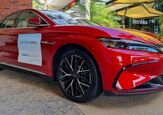














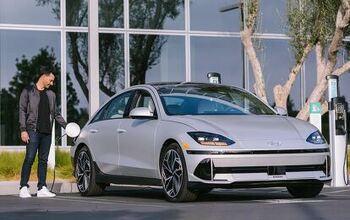

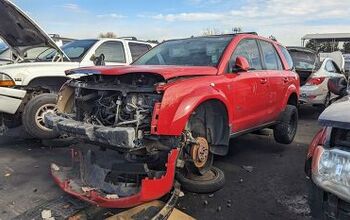
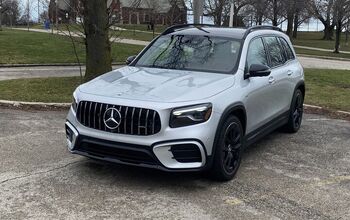
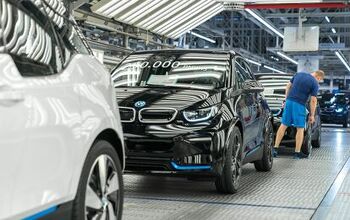

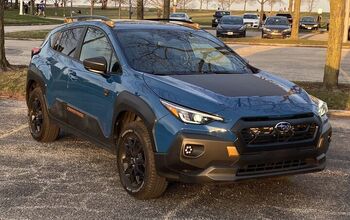

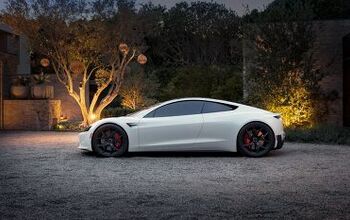

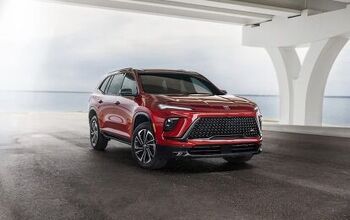
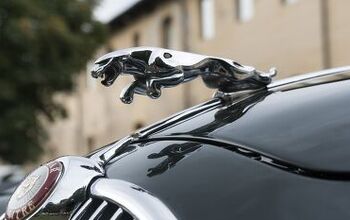
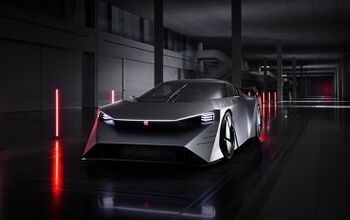
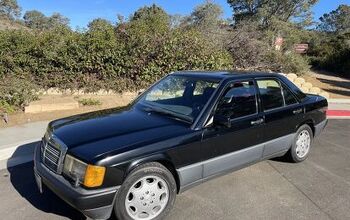
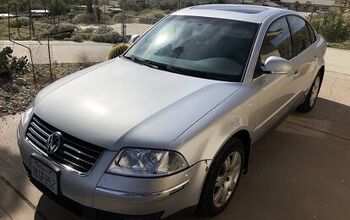
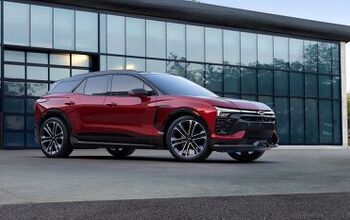
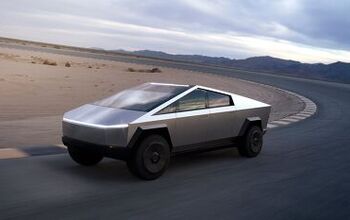
Comments
Join the conversation
I can tell some of you don't appreciate the level of danger you are in right now!
Elections have consequences. Sucks to be you